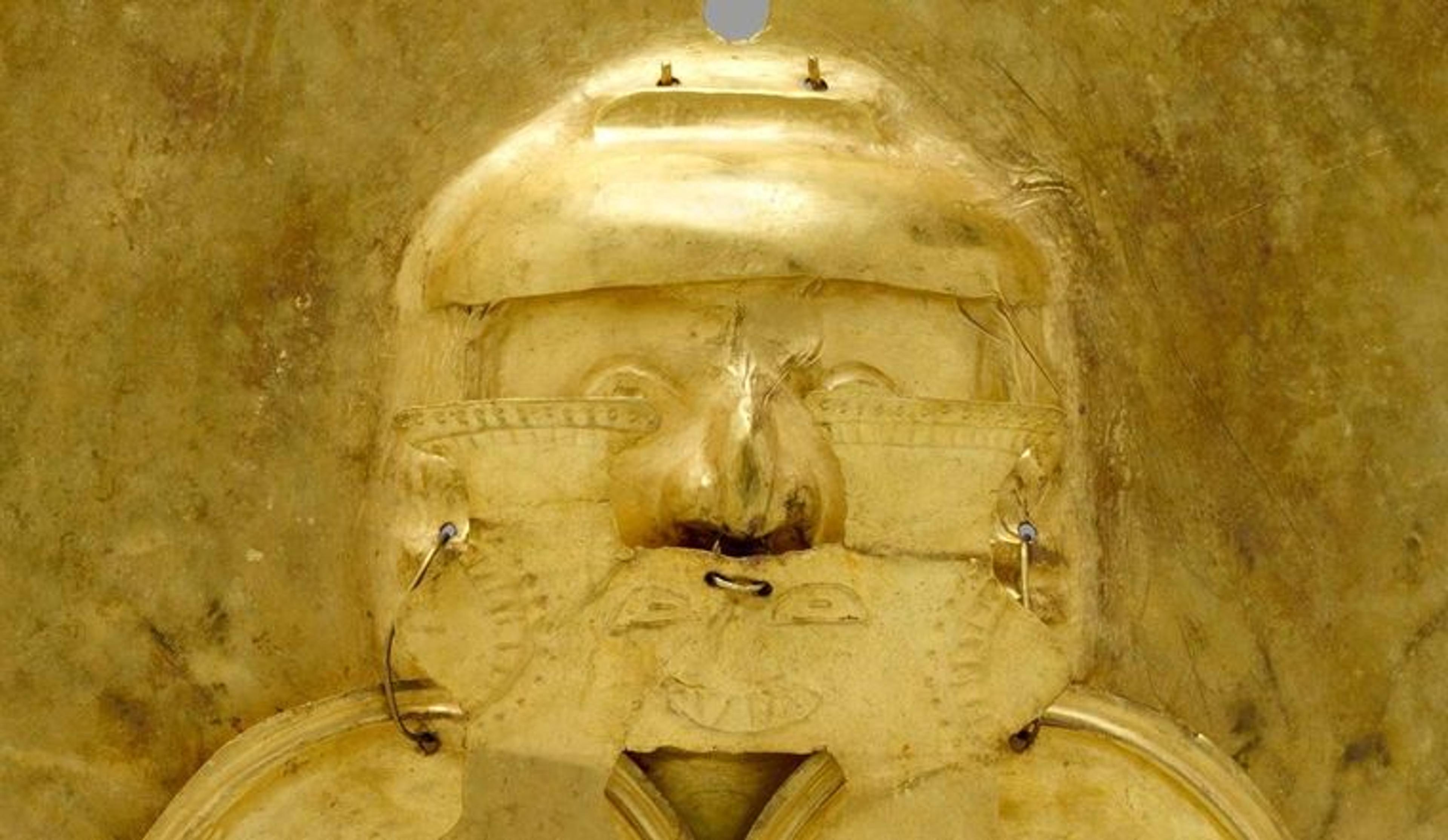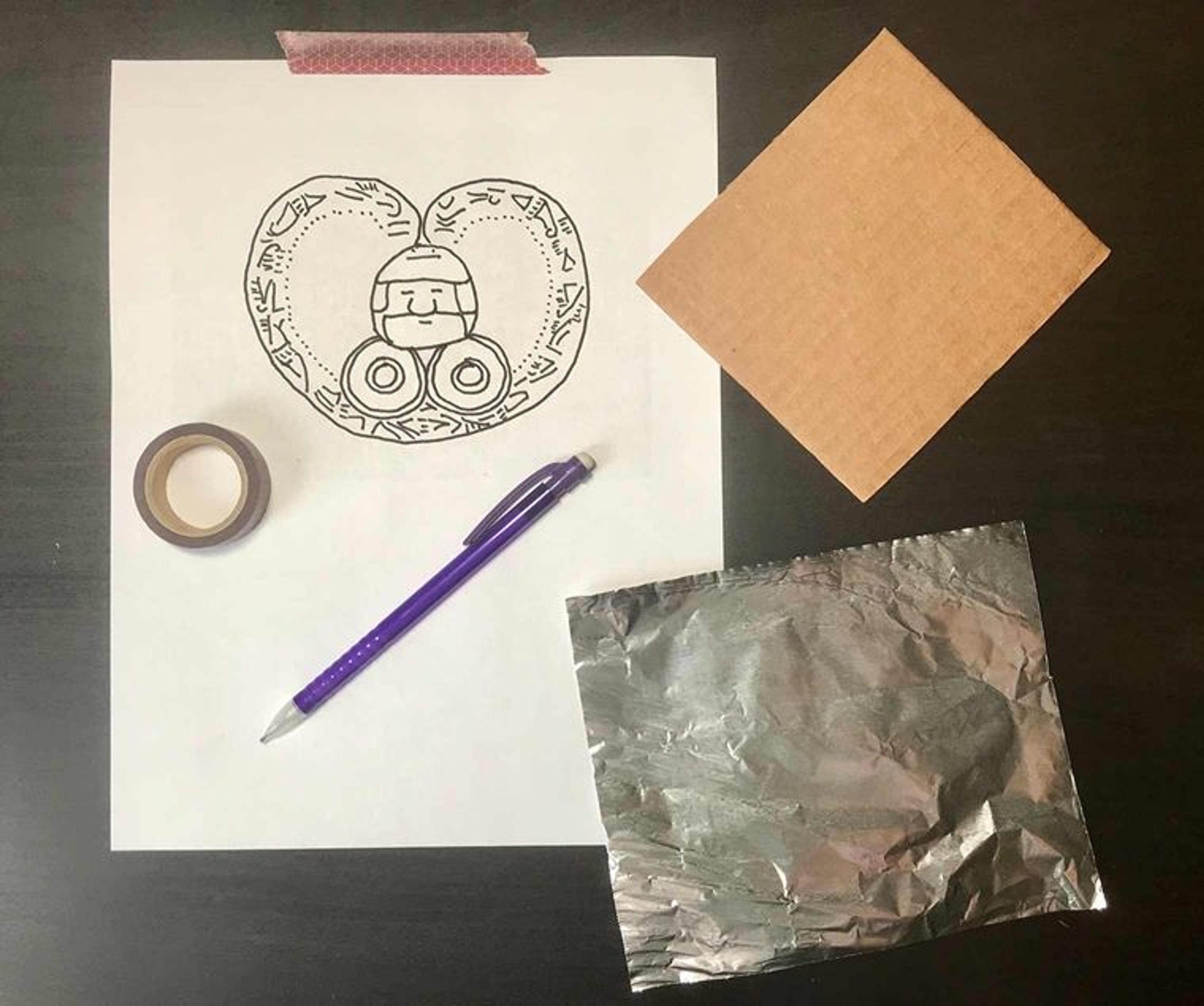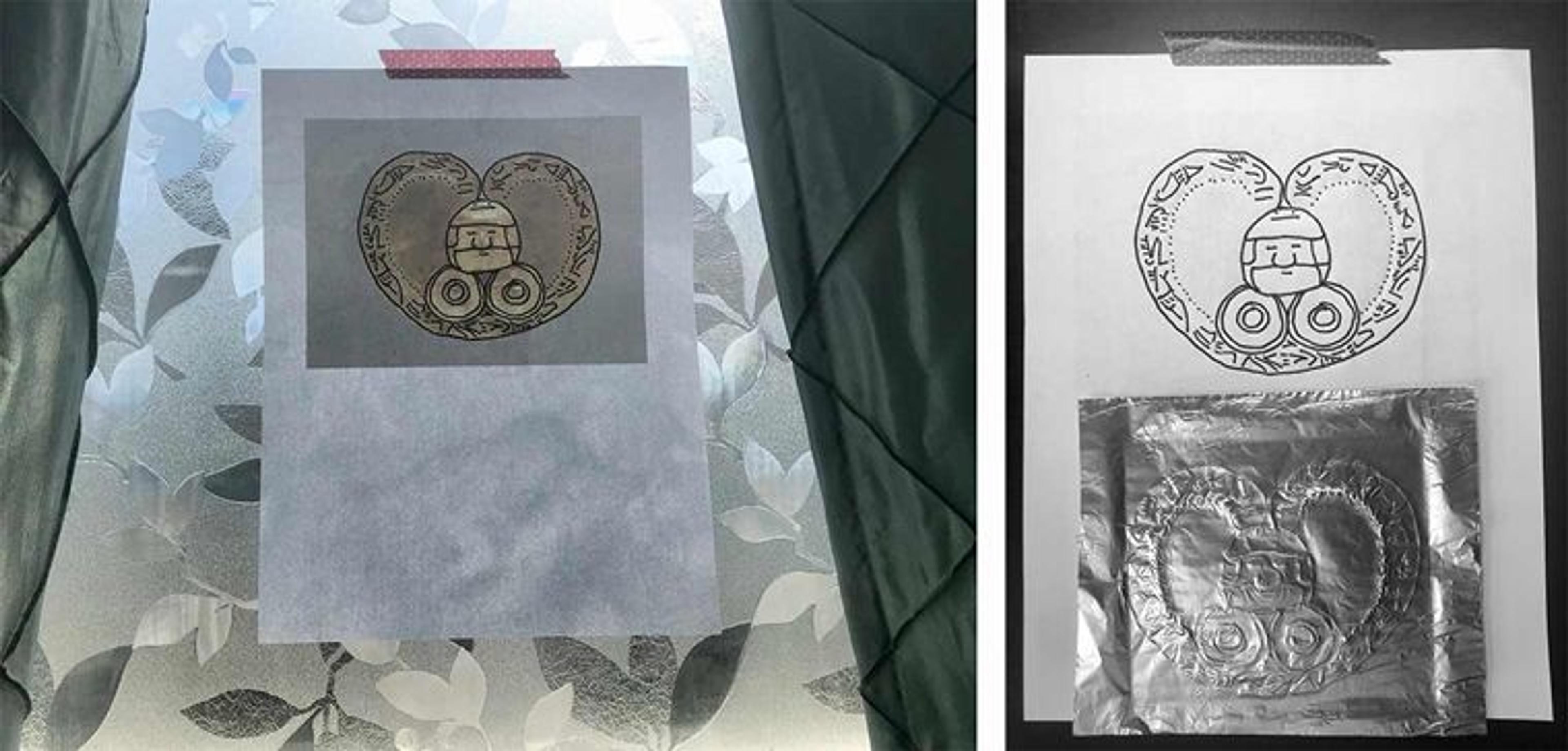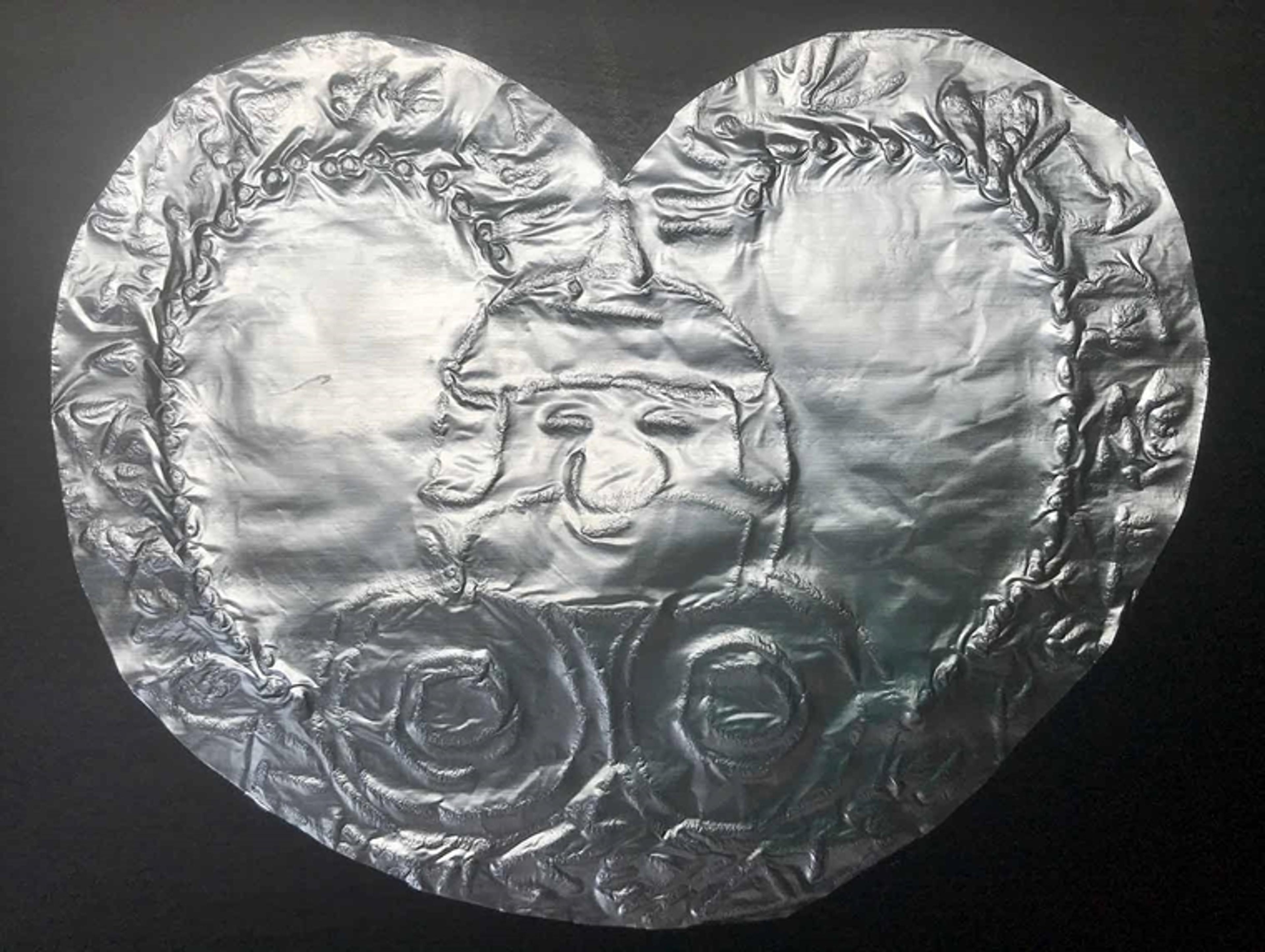Pectoral with Face, 1st–7th century. From Colombia. Gold (hammered), 8 3/4 x 11 x 1 3/8 in. (22.2 x 27.9 x 3.5 cm). The Metropolitan Museum of Art, New York, The Michael C. Rockefeller Memorial Collection, Bequest of Nelson A. Rockefeller, 1979 (1979.206.507)
Ancient Colombia was known as the land of gold! The precious, sacred metal was worn by important leaders and rulers. The breast plate Pectoral with Face was made more than 3,000 years ago by artisans from the Calima culture. This pectoral ornament is approximately the size of a sheet of printer paper; a leader would have worn it on his or her chest, suspended by a cord through the two small holes on the top. Look closely to find them on the headdress worn by the person shown here:

But how was this pectoral made? The artist would have first hammered the gold into a thin sheet, then cut out the outer shape . . . then comes the hard part! Do you see the fine details along the edge? These were made using a technique called repoussé [ruh-poo-SAY]. These markings would have been worked into the back of the metal sheet using a bone or metal tool the way we might use a pencil to draw. By pushing the tool into the sheet, they created a raised image and design on the front. The raised pattern along the edge of the pectoral looks like decorative painting found on ceramics from Colombia's Cauca Valley region.
The face at the center of the pendant was made using a combination of techniques: repoussé, embossing, and shaping in a mold. Embossing is made in the opposite way of repoussé; instead of working the backside of the material like with repoussé, the artist works the metal from the front of the object when embossing. Try to spot the difference between the repoussé along the edges and the embossing on the face. Look closely and you'll see that the artist has depicted the person wearing a nose ornament, a headdress, and large ear plugs hanging from tiny wires.
Repoussé can be found across the globe and throughout thousands of years of history. A few other examples in The Met collection include a brass Ewer made in Iran or Afghanistan, a pair of German Kettle Drums made from silver, and a Vajracarya Priest's Crown from Nepal.

Left: Ewer, ca. 1180–1210. Attributed to Iran or Afghanistan, Khurasan or Herat. Brass; raised, repoussé, inlaid with silver and a black compound, 15 3/4 x 7 1/2 in. (40 x 19.1 cm). The Metropolitan Museum of Art, New York, Rogers Fund 1944 | Center: Franz Peter Bundsen (German, ca. 1725–1795). Kettle Drums, 1779. Silver, iron, calfskin, textiles, gilding, 16 1/2 x 23 x 23 in. (41.9 x 58.4 x 58.4 cm). The Metropolitan Museum of Art, New York, Purchase, Robert Alonzo Lehman Bequest, Acquisitions Fund, and Frederick M. Lehman Bequest, 2010 | Right: Vajracarya Priest’s Crown, ca. 15th–16th century. Nepalese. Copper, gold, turquoise, semi-precious stones, silver foil, 13 1/2 x 8 9/16 x 9 1/16 in. (34.3 x 21.7 x 23 cm). The Metropolitan Museum of Art, New York, Rogers Fund, 1948
Let's try our hand at designing our own repoussé breastplate using household items!

Materials:
- aluminum foil
- cardboard (the same size or larger than the foil)
- wooden stylus, dull pencil, craft stick, pointed dowel, or the handle of a paintbrush
- blank paper OR pre-printed image from a magazine, newspaper, or online source (no larger than the foil)
- window
- tape
- scissors (optional)

Instructions
1. Draw an image on a piece of paper OR find an image that inspires you in a magazine, newspaper, or an online source.
2. Face the drawing towards a window and tape it against the glass to trace the drawing on the back of the paper. Set aside.
3. Place the aluminum foil over the cardboard, then place the traced drawing face-up on top of the foil.
4. Using a wooden stylus, dull pencil, craft stick, pointed dowel, or the handle of a paintbrush, slowly trace the drawing. Be careful not to poke a hole in the paper or foil.
5. Set the paper aside and flip the foil over.
6. Cut out your design. Then, punch holes and loop in a cord or string so you can wear your breastplate.

You now have a custom work of art featuring handmade repoussé. A ruler dressed in full regalia—adorned with metal on their torso, neck, and head—would shine bright like the sun, showing their divinity and force. Wear your new work of art proudly like Pectoral with Face to show off how powerful you are!
Explore more examples of repoussé at #MetKids, then send your artwork to metkids@metmuseum.org for a chance to be featured on our site!
Photos by Julie Marie Seibert
